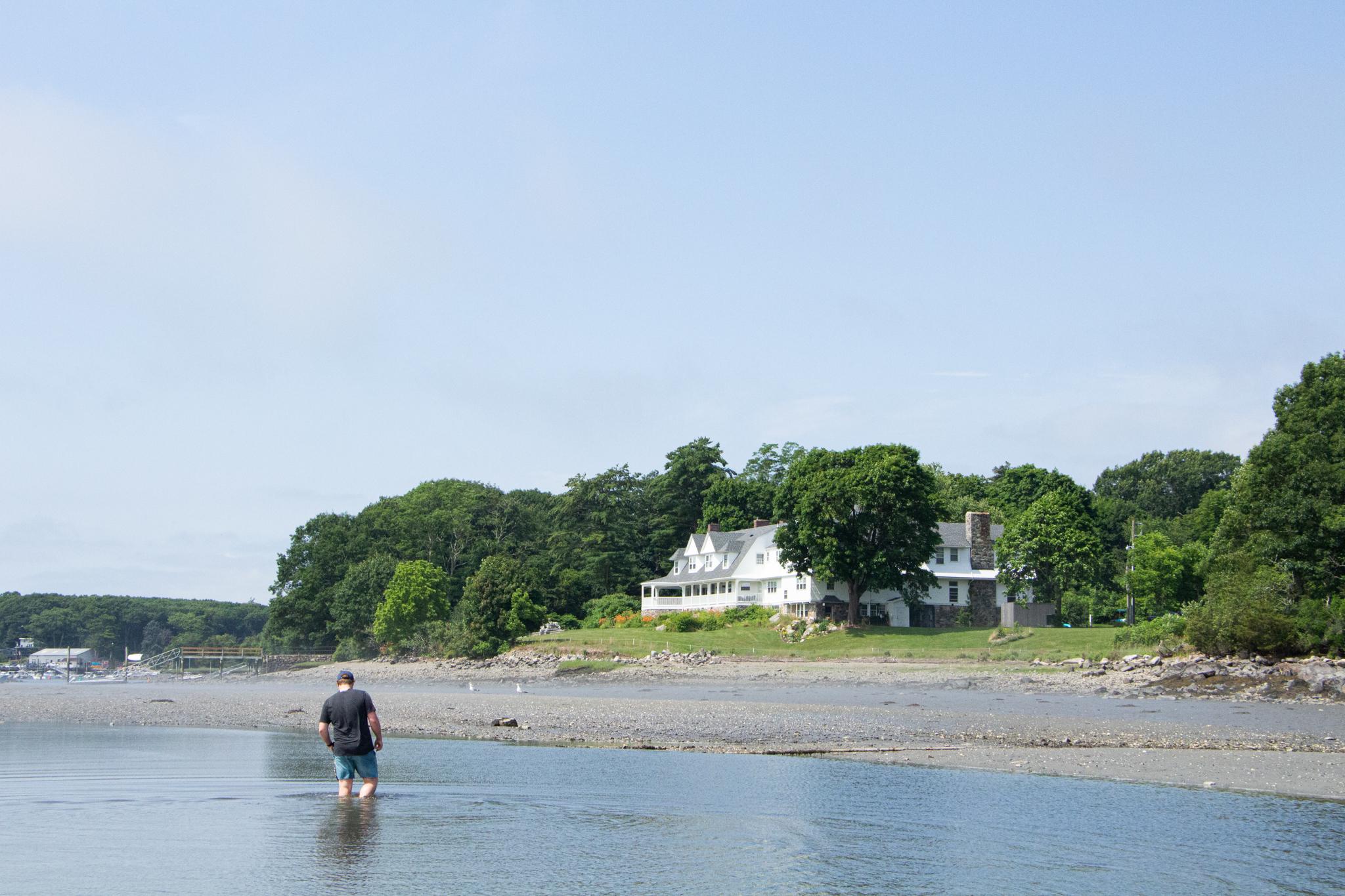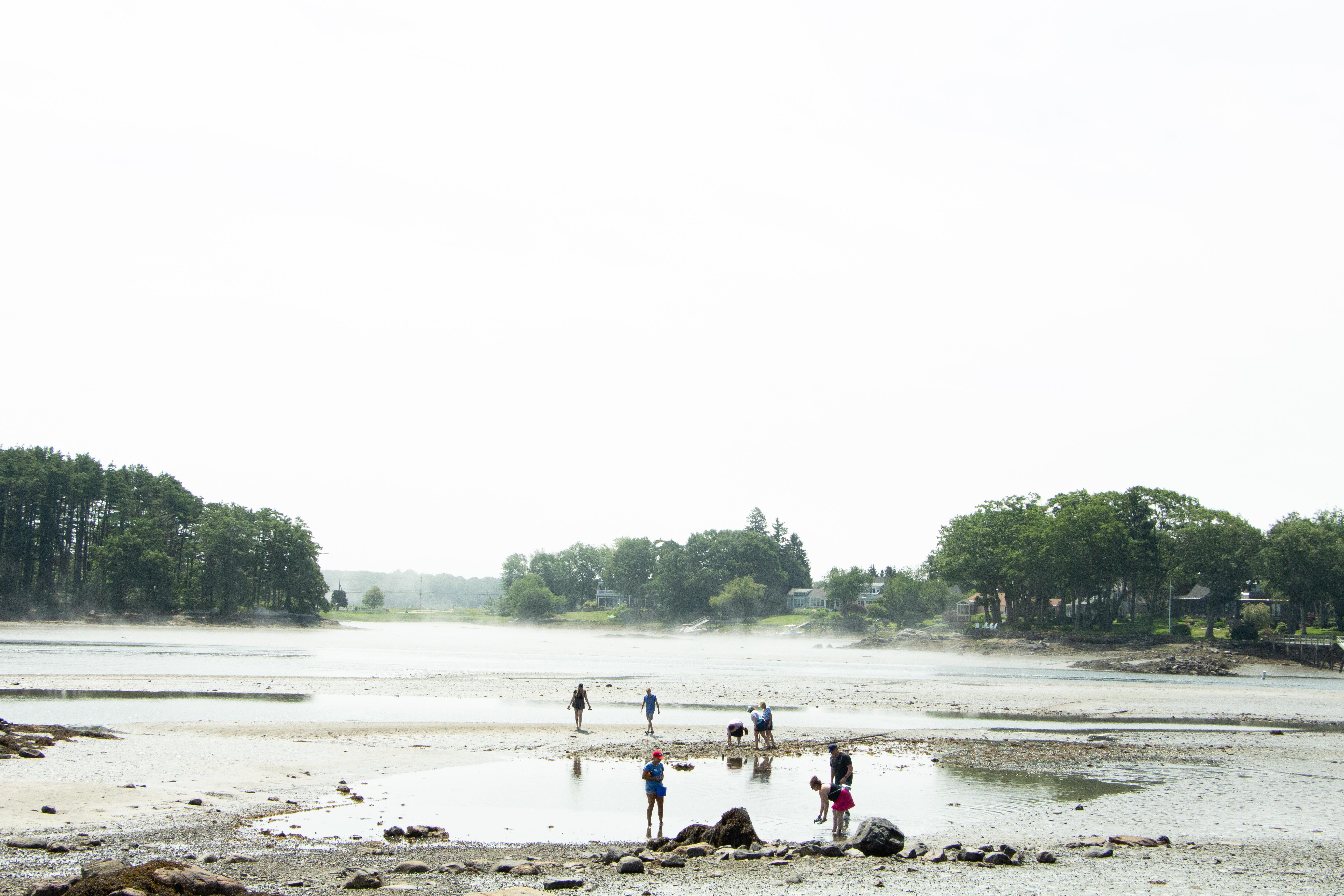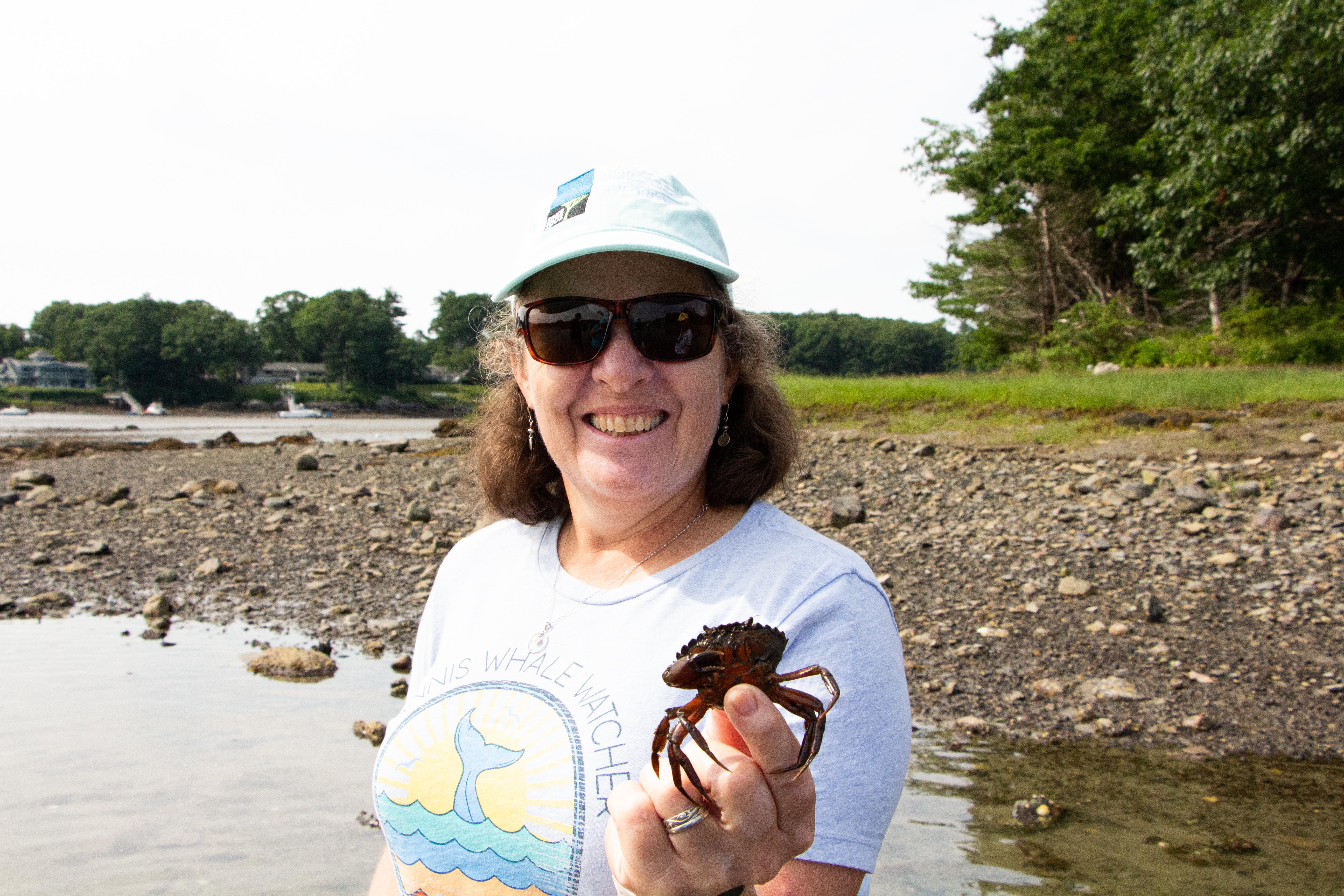
Sea mist rolls off the Atlantic onto the calm waters of Sagamore Creek, adding a wispy fog to a morning landscape already made hazy by the July sun. Kayakers glide through the shallows of low tide, dogged by cormorants, terns, even a male bald eagle. It’s almost impossible, staring out at this tranquil scene, that downtown Portsmouth buzzes with traffic only eight minutes from this very spot.

Now, however, the excited exclamations of children is replaced by that of full-grown adults.
The Adult Tide Pooling Program offers adults the opportunity to reconnect with their inner child and immerse themselves in the pools and inlets of Sagamore Creek. This particular day, six Teva clad, sunblock slathered marine enthusiasts descended on the beaches in front of Creek Farm to search for crabs, inspect orange sponges taking residence in old wine bottles, and break up more hermit crab fights than we would care to mention.
Sarah Kern, the Education Program Coordinator at Creek Farm, led the group through the shallows, and provided pearls of marine wisdom along with our camp counselor for the day, Ella, from the Gundalow Company.
“My favorite part of the day was seeing everyone so excited,” says Kern, “It’s always nice watching strangers feed off each other’s positive energy and grow closer through our discoveries.”
The discoveries are plentiful. In a shallow pool near the shore, we kidnap a green crab for a few minutes while Ella explains the strategy for identifying the species — next to the creature’s eyes, close observation reveals five notches in the shell, one notch for every letter of the word “green.”

“It was so fascinating to watch some of the same tricks of the trade being used for ID in tidepools as we use in the forest,” she said.
We let the green crab go after another impressive crustacean reveals himself, this one missing a front claw. We find solace in learning that this handicap is not forever, and soon he will sprout a new one.
Back into the water he goes, and the group moves on to inspect a fast-moving shrimp bouncing between mussel shells faster than we can blink.
As we make our way around the inlet, we stumble across dozens more crabs (each more unhappy to see us than the last), a four-pointed sea star, and what must have been thousands of periwinkle snails weaving trails in and out of vacated seashells, and masses of kelp oscillating lazily in the barely-there current. But what we are really hoping to find is a moon snail.
Moon snails, named as I can only guess for their opalesque, iridescent shell, are commonly found on the shores of the East Coast, from the Gulf of St. Lawrence, down to North Carolina. They spend most of the day buried beneath the sand, waiting for a quiet time to come out and hunt. On the surface of the sand, they burrow across the shallows, searching for unsuspecting shellfish to devour. When they locate their prey, they use their massive foot (large enough to surround a human hand) and use a mouthful of water and sand particles to forcefully drill a hole into the hard exterior of their victim’s shell. While their name and coloring bring to mind some ethereal being, their actual existence can only be described as “metal.”

Holding a moon snail is something akin to reaching your hand into a bucket of egg yolks and lifting out a fistful while the yolks try determinedly to suffocate your fingers. This moon snail is about the size of my palm and resembles a slightly overripe banana. It isn’t long before a small crowd has gathered around it, program participants and other beach goers alike.
“It was so great watching people from the community get together with our group and interact with the ocean in a new way,” said Sarah Kern, “I love being able to feel like we facilitated a positive, impromptu learning experience.”

- Learn more about the Gundalow Company and look for more adults-only summer camp experiences coming next summer.
- Watch a reel of Sophie's day
